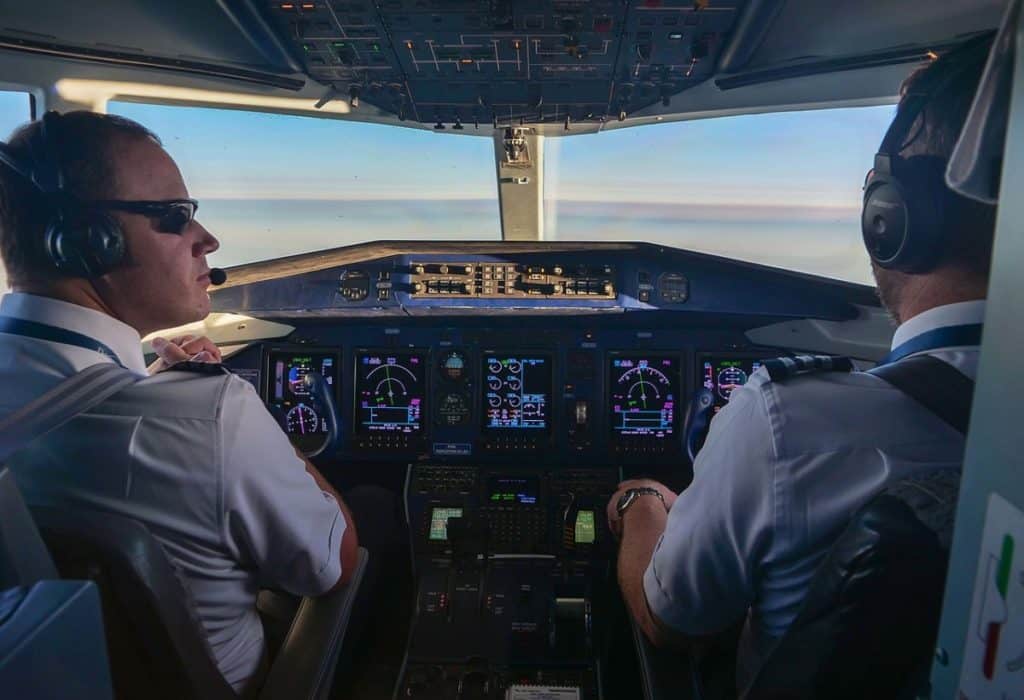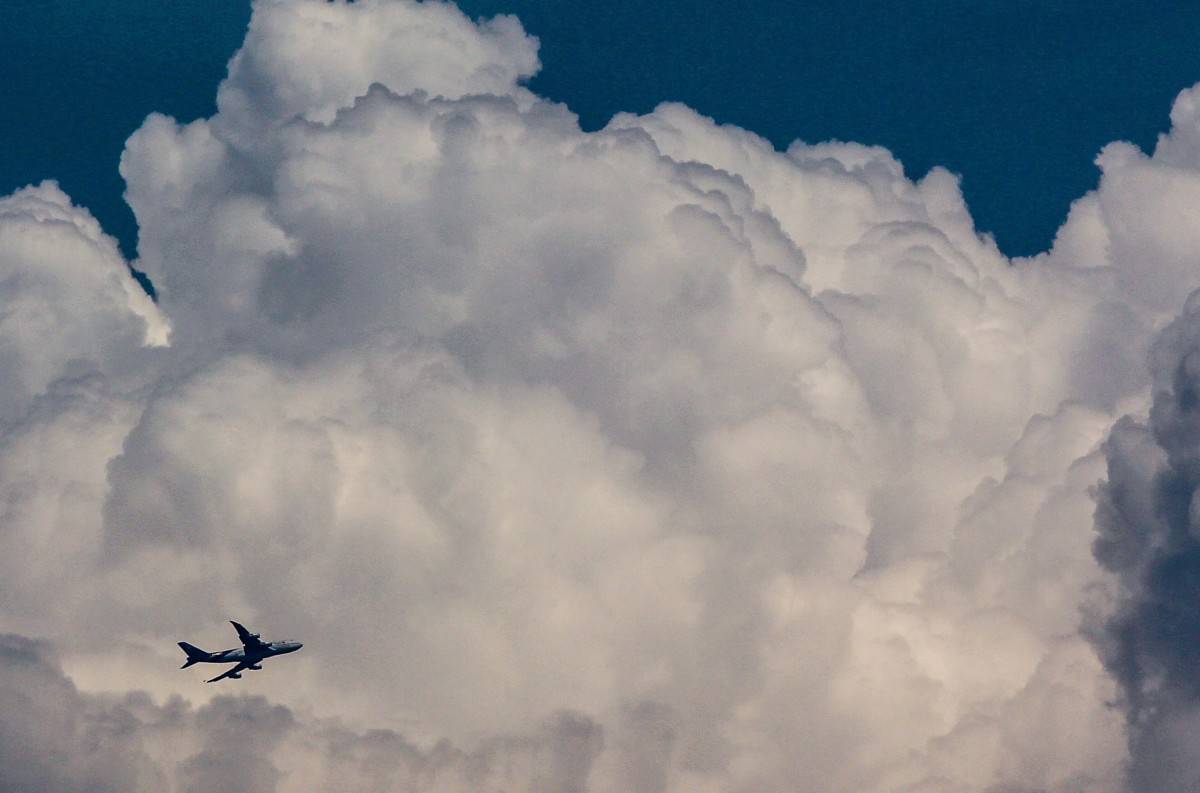
Turbulence is never a pleasant experience for anyone, especially those who are frightened of flying. Even the most seasoned of travelers have experienced a formidable bout of airplane turbulence, even in the most peaceful of journeys.
However, turbulent situations aren’t nearly as dangerous as they may seem, and sometimes, they’re inevitable, especially in the warm summer months.
Airplanes shake in clouds because of changes in air pressure, air density, and rising and falling air currents within the cloud and the air surrounding it. The atmosphere inside a cloud is also very irregular, especially in cumulus clouds causing the airplane to shake as it flies through each pocket.
Although it might be a little frightening at times, airplanes shake in clouds for a very good reason – and the shaking is not dangerous. It is something the airplane designers planned for and have built-in huge safety margins!
Aside from spilling your coffee while the plane lurches about, or luggage that falls out of the overhead bins when opened there isn’t much to be afraid of.
As an airplane flies through the air, especially in and out of clouds it will encounter varying changes in atmospheric conditions. The changes are imparted onto the airplane and because they have such large surface areas on their wings, it amplifies the effect of the changes. However, the heavier an airplane is, the less these changes can be felt.
A small bump in a light aircraft like a Cessna can be far more violent than on a Boeing 747 because its mass is far less.
It’s like trying to push over Shaquille O’Neal Vs. PeeWee Herman
This is also a reason why a descent for landing may feel more uncomfortable than when the airplane took off because it has burned off tens of thousands of gallons of fuel and it now weighs far less.
In this article, I’ll discuss the ins and outs of why clouds cause the shaking of aircraft, commonly known as turbulence, and what causes it.
What Type of Turbulence Is Caused by Clouds?
Clouds create convective or thermal turbulence. This is rising & falling columns of air within the cloud. As the airplane passes into and through the differing air columns it will rise and fall with the currents. This causes the airplane to shake & shudder especially when transitioning between them.

Typically, the most turbulence within a cloud often occurs in the summer months when the sky is dotted with large, fluffy Cumulous, or Cumulonimbus clouds. One minute the plane is flying smoothly through the air, and the next, it is shaking and bumping around like a cat is playing with it.
These clouds are known as unstable air masses and they usually build into thunderstorm cells which can create extreme turbulence. This is why pilots fly around large thunderstorm cells or the airport may suspend all flights taking off and landing until the cell has passed.
But, when clouds form a uniform layer or an overcast sky this is a Stratus-type cloud. These clouds are very stable, have uniform thermal, pressure, and density characteristics, and create very little turbulence when an airplane flies through them.

Join My Newsletter & Get Great Tips, Information and Experiences To Help You Become a Superb Pilot!
Why Do Clouds Cause Turbulence?
When warmer air rises up inside a cloud its air pressure reduces. This rising air also carries water vapor with it which then cools and condenses into water droplets. This makes that portion of the cloud denser than the air outside of the cloud. Airplanes feel these changes as they fly through.
The more fluffy a cloud and the higher it rises in the sky, the more turbulence it will create within it. The air inside the cloud causing it to rise is ascending much faster than the air outside of the cloud. Just flying from these differing air speed columns will cause the airplane to rapidly rise and fall.
Have you ever walked out from the side of a building and been blown over by the strong wind out in the open? This is the same as going from outside a cloud to inside a cloud. The more powerful the thermal currents inside it, the higher the turbulent force will be when entering it.
The erratic updrafts and downdrafts also deposit their water vapor differently throughout the cloud itself. This creates irregular pockets of air density. As more water droplets accumulate in one area compared to another this creates the same differential as the air currents.
As the airplane flies from one pocket of dense air to a pocket of less dense air this affects how much lift the wings produce and causes the airplane to shake and shudder.
Therefore if you watch an airplane as they take off before you and you see them flying towards fluffy clouds, be sure you may encounter some shakes and bumps on your departure too.
Learn More…
Try These Articles:
* Flying In & Above Clouds: Can Helicopters Do That?
* How Do Pilots See At Night? A Pilot Tells All!
Can Turbulence Be Avoided?
You can’t see turbulence, but it’s something for which pilots must be prepared, and with experience and modern techniques, areas of turbulence that catch pilots out are reducing.
Turbulence is hard to avoid because it cannot be seen. Reports from other pilots known as PIREPs help to let other pilots know where turbulence has been encountered. Large storm cells often produce turbulence and these cells can be seen on aircraft and air traffic control weather radars.

Since weather patterns are constantly changing, meteorologists have problems predicting their movements. Timely, ‘Best Guess’ reports are about the most accurate ways of predicting where turbulence may occur.
When large storm cells are developing in the area, air traffic control can adjust the airplane’s flight path to help steer them around the cell. Pilots can also request a heading change if they see a cell directly ahead and the data provided to them indicates there is a strong possibility of turbulence.
Besides avoiding clouds where possible and contacting other pilots, that’s about all that can be done.
Turbulence is no fun, but in general, the only real risk associated with turbulence is passenger injury should they’ve discarded their seatbelt. Otherwise, a rocky journey is probably the worst of it.
Learn More…
Try These Articles:
* This Is Why Plane Windows Are So Small!
* Why Do Airplanes Need to Be Towed & Pushed?
Final Thoughts
Airplanes shake in clouds because convective weather produces unpredictable air patterns and weather changes that pilots, unfortunately, don’t have much control over.
Although it’s unpleasant – and can even seem downright terrifying in the event of a storm – the best advice you can hear in this situation is always to wear your seatbelt during a period of turbulence and trust that the pilots know what they’re doing.


